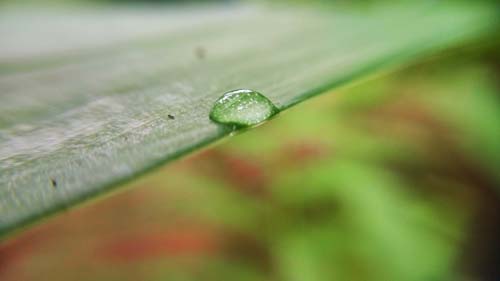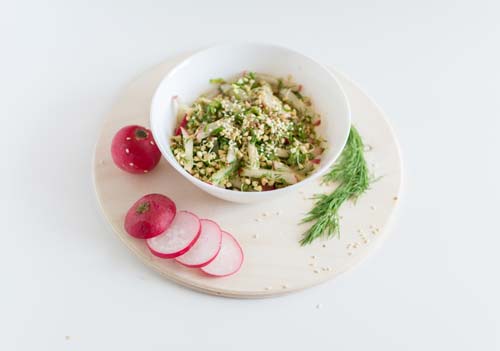![How To Deal With Sensory Overload [9 Tips For Overstimulation]](https://happyrubin.com/wp-content/uploads/2019/12/ik-ben-overprikkeld-150x150.jpg)
Observing vs Interpreting: Best Exercises [Perceiving Without Judgment]
![Observing vs Interpreting: Best Exercises [Perceiving Without Judgment]](https://happyrubin.com/wp-content/uploads/2016/04/observeren-waarnemen-technieken-oefeningen-1280x640.jpg)
Observing vs interpreting… How do you become better at observing sharply and without judgment (without interpreting)? We are going to practice observing in this article. We will do that with the help of sensory acumen, mindfulness and calibration. Those are three concepts that go very well together, so we bundle them together here!
Contents of this page:
What is observation and what is interpretation?
Observing means that you perceive and enumerate sensory verifiable things. So observation is everything you see, hear or feel through your senses. For example, you can perceive a person’s muscle tension, the position of the corner of a person’s mouth or a person’s posture. You can also hear words and the characteristics of the voice: the tempo, volume, etc.
Interpretation is, for example, that you say: you look happy! This is not a sensory and factually verifiable statement. This is also called mind reading .
A moment when it is valuable to be able to make this distinction is, for example, while giving feedback.
Observe better? Improve your sensory acumen

The first step to becoming good at observing: gather factual information!
We constantly collect information. We do this, among other things, by learning to ask critical questions, but also by optimally training our senses and using our body as a tool. This is how we bring information to the surface. This is useful, because with information you can solve problems and view limitations from a different perspective.
As we use our senses better, we begin to see things that we did not see before, and we begin to see things that we did not know we were seeing. We can then read between the lines. For example, it is useful to be able to notice small changes in people’s voices when someone is on the phone talking to you, or you can listen carefully to the subtones, emotions or uncertainties in order to detect incongruity or deception.
Our body as the ultimate tool to collect information through observation
In the past, people had no choice and had to use the body as a tool. 1,000 years ago, shipmen navigated with their bodies. The compass had not yet been invented, because they had not yet discovered magnets, let alone GPS. When they sailed into the middle of the Pacific, with 1,000 km to go, they could use their bodies in the following ways.
- Visual: they looked at the stars, the sun and the moon to determine the direction.
- Feeling: they felt the direction the wind was coming from.
- Feeling: When all else isn’t possible, they used the waves. They lay down in the boat and through fluctuations in the blood of their bodies they sensed whether course was being held.
You become better at observing by stretching your sensory acumen
For example, it is easier to communicate if you see much better what you see, hear better what you hear and feel better what you feel. For example, you notice that it is almost impossible to sink into unimportant thoughts or to start dreaming in your head about what to say best.
You will find exercises for this in the following sections. With three people we will lower the filter with which we see, hear and feel things. The purpose of these ‘Sherlock exercises’ is that we have more ‘uptime’ and make perceptions, instead of being in ‘downtime’ making conceptions and assumptions.
In other words, this will make us function less on our maps, but more on the world, our perceptions. Because of this, we adjust our map of the world instead of just reading it. We also step into the cards of our relationships to understand them better, and that’s how the magic happens. For example, “What is he really saying?” Instead of making assumptions about what he says.
“To go out of your mind at least once a day is tremendously important. By going out of your mind, you come to your senses.”
— Alan Watts
A number of exercises to become good at observing instead of interpreting
With the following exercises, we will become aware of our physical senses through sensory acumen, calibrating and mindfulness. These are:
- Eyesight
- Hearing
- Feeling
- Smell
- Taste
We carry them with us wherever we go. So the handy thing about this exercise is that we can do it anytime, anywhere. For example:
- While walking
- During the washing up
- When we sit in the garden
It is unfortunate that we normally only use our physical senses unconsciously. With the following exercises we can be consciously open to the external world, allowing us to see how alive the world is. We also become aware of how much life there is in ourselves.
What are the effects of these observation exercises?
By doing these exercises you will automatically end up in ‘ the now ‘ because consciousness and ‘the now’ are inextricably linked. You can only smell now, see now and hear now. You cannot use your ears or eyes yesterday or tomorrow. There is always only one moment: the present moment.
This exercise brings you into the present moment. You perceive the world as it is. That is awareness. That also means that you can comprehensively perceive the properties of the objects in the world without judging.
How can I interpret these exercises?
You can do these exercises with someone or you can do them alone. When you are together, you can say your observations out loud during the exercises. If you are alone you can do that in yourself.
Is there a purpose in these observation exercises?
Yes and no. When you work towards a goal, you say to some degree, “The present moment is inferior to the future.” Rather, we want to be completely in the present moment during these exercises. With mindfulness, the means is the goal: to be in the present moment, not to judge and to become aware. Of course, on the other hand, you will find that you develop more joie de vivre, charisma, love, presence, alertness and many more virtues the more you practice mindfulness. These are natural consequences of mindfulness and should not be seen as a goal.
Do I have to pay attention to anything?
Yes! In mindfulness it is essential that you do not judge . The exercises focus on observable properties of the world around you. You perceive what you experience without attaching a story, interpretation or opinion to it.
- Perceptible characteristics: “That lady walks at a fast pace, her coat is flapping in the wind.”
- Judgment and story: “She must be in a hurry. Why would she run so fast? ”
Although the bottom example is a fun people-watching game, we want to avoid this during mindfulness. It brings us into our head, into the past and into the future. So everywhere, except in the present moment. There is also a place for these kinds of games, but separate that from mindfulness. We now let go of our judgments. And we do not judge ourselves, for example if we fail to do an exercise. Accept it and let it be as it is.
It’s not right, it’s not bad, it’s just there.

Perception Exercise 1 – Eyesight
Name 5 different objects. These can be inanimate objects, such as a cup of coffee, or living objects, such as people. So just look at five objects and name them. Make sure to choose objects that are far apart so that you can look around you. If all goes well, you can also choose many more than five objects.
You can pay attention to the following with regard to the objects you perceive:
- What is the color? Are the colors vivid / bright / intense / bright / brilliant or dull?
- Contrast: is there high contrast or low contrast in the object or in relation to the environment?
- Sharpness: is the object sharp or blurred?
- Observe the texture with your eyes: is the texture of the object smooth or rough?
- Level of detail: are there any details on the object?
- Size: how big is the object?
- Distance: How close or how far is the object specific?
- Shape: what shape does the object have? Is it square, round, rectangular, organic?
- Border: is there a clear border to the object or does it flow into the background? Does the border have a color? How thick is it?
- Location: where is the object in space?
- Movement: is it a stationary object or is it moving? How fast are the movements? the object stable? Which direction is the object going?
- Dimension: is the object 3D or flat?
Bonus training
Close your eyes and name which objects you observed.
Bonus training
Look around and notice five objects of the same color. Because of this you also experience what it is like to bundle your consciousness. You can use bundled or focused attention to achieve your goals.
Bonus training
Notice as many objects as possible with the current sense: sight. How many objects can you perceive and name?
Bonus training
Now close your eyes for a while and open them again. Now look around you again and notice the things you didn’t notice last time.
Classic NLP Exercise – V (isual)
- B and C face A in the base position.
- A calibrates this situation and then closes his eyes.
- B or C changes something about itself. This can be, for example, a facial expression, posture or item of clothing.
- A guesses what has changed.
- B and C return to basic position.
- Repeat until another stretch takes place in the acumen of A.
- Bonus: notice 3 things in the room that were actually there all along.
Visual exercise for after a break
“We just had a break. What color was the canteen?”
Exercise – Respond alertly to unexpected situations
have your friend move his hand very slowly to your head during the day at unexpected times. You have to push that hand away. Do this throughout the day, week or at all times to keep learning!
Perception exercise 2 – Hearing
You may now use your hearing for this exercise. Notice five objects using this sense. The list below helps to give attention to these objects.
- Location: where does the sound come from? Can you hear it from the outside or from the inside?
- Distance: is the sound near or far?
- Height: are they high or low tones?
- Melody: is it monotonous or melodic?
- Volume: how loud or soft is it?
- Tempo: how fast or slow is the sound?
- Rhythm: does it have a beat?
- Mono / Stereo: Can you hear the sound from one side or both sides?
- Is the sound mainly verbal or tonal?
- How clear is the sound?
- Are there pauses or silences? How much?
Bonus training
Listen to as many sounds as you can notice and list them.
Classic NLP Exercise – A (uditory)
- Person A sits with his eyes closed in front of B and C.
- Start calibrating with names: B snaps his fingers three times and each time she calls her own name. Then C does the same. You can also use other sounds, as long as it can be inferred from a person’s body.
- When A has calibrated sufficiently, B or C will keep snapping her fingers once. A guesses, still with her eyes closed, who’s the snap of the finger.
- If A is correct, then the person who made the sound says: “Correct”. If A did not guess correctly, the person who made the sound says: “No, {correct name}.”
Remarks:
- Go towards 75% correct for an optimal stretch of your skill.
- If it does not go well after a while, A can ask to recalibrate according to step 1.
- After a while, you stretch A’s consciousness by making it more challenging. Make the finger snaps more difficult to trace by, for example, firing them from different locations. You can also adjust other submodalities to make it more difficult, for example location and volume.
- Your intuition uses your sensory acumen and is often right. Try to act quickly to actually use your sensory acumen (conception, ignoring / updating your own map of the world) instead of using your thoughts (perception, reading your old map of the world).
Perception Exercise 3 – Feeling
View and touch 5 different objects. Walk up to them if you can’t reach them. You can do this exercise even when you lie in your bed at night. You do not have to look at it. Use the list below for maximum awareness and attention.
- Texture: how would you describe it? Is it firm or soft, smooth or rough? Is it tinkling, warm, cold, relaxed, tense, etc.?
- Intensity: how strong or weak is the feeling?
- Location: where do you feel it in or on your body? What finger or other body part did you touch the object with?
- Movement: is there movement in the feeling? Is the movement constant or does it come in waves?
- Direction: where does the feeling begin? Where does it move?
- Speed: does it take a while before you notice the feeling or does it arrive at once?
- Weight: is it a heavy or a light object? Is it a heavy or light feeling?
- Continuity: is the same feeling constantly changing?
- Temperature: is it a warm or cold feeling?
- Does it have a certain pressure?
Classic NLP Exercise – K (inesthetic)
- B and C choose a knee from person A. They are going to touch this knee.
- Use the same format and comments from the auditory exercise.
- Start with 3 fingers, then 2 to make it more difficult.
Additional kinesthetic exercise – The stone
- Everyone is looking for a stone.
- Feel how the stone feels.
- Mix your stone with that of two other people in a container.
- Close your eyes. Search your stone by feeling.
- Repeat the exercise, but with 6 people.
Perception Exercise 4 – Emotions
Choose five objects again and observe them one by one.
- Include the feelings and emotions now. What emotions are involved when you look at the object?
- Where in your body do you experience it?
(Pay close attention to where you go with your hands unconsciously while checking where the feeling is, because your subconscious will automatically provide the answer.) - Be aware that these emotions are there and that you can feel them, but they are not part of your identity. You are the observer, not what is perceived.
Perception exercise 5 – Sense of smell and taste
We are now going to smell and taste five different objects.
- First, notice (touch) the different colors and textures of the objects.
- Add your sense of smell: sniff the air to smell the scents. What are the different aromas of the objects?
- And your sense of taste: how do they taste?

Observing vs interpreting: those were all the most effective exercises
We have now trained our sensory acumen, allowing us to observe better. In the article ‘Not filling in for Another’ you can find more tips to be able to observe without judgment. The opposite of that is called mind reading. This article will discuss this.
During an NLP Practitioner Training you will be continuously trained in this. Leave your comment on this article below.

![5 Best Self Care Tips For College Students [#1 Advice]](https://happyrubin.com/wp-content/uploads/2021/09/the-best-self-care-tips-for-college-students-440x264.jpg)
![How To Stick To New Year’s Resolutions: 9 Tips [Smart & Sure Ways]](https://happyrubin.com/wp-content/uploads/2019/12/tips-voor-goede-voornemens-440x264.jpg)
![How To Stop Being So Hard On Yourself [9 Great Tips]](https://happyrubin.com/wp-content/uploads/2019/12/we-moeten-zoveel-van-onszelf-en-anderen-150x150.jpg)

![19 Best Ice Breaker & Get-To-Know-Eachother Games [Fun & Simple]](https://happyrubin.com/wp-content/uploads/2018/02/leukste-ijsbrekers.jpeg)
![Becoming More Social: 41 Tips [Improving Social Skills] [List]](https://happyrubin.com/wp-content/uploads/2018/06/sociale-vaardigheden1.jpeg)
![How to start a conversation with anyone: 15 tips [Making contact]](https://happyrubin.com/wp-content/uploads/2017/08/gesprekstechnieken1.jpeg)
![372 Friend Tag Q&A Questions [Best Friend Quiz]](https://happyrubin.com/wp-content/uploads/2019/05/best-friend-tag-vragen-voorbeelden.jpg)



![Clingy & controlling behavior of partner/date [Extreme examples]](https://happyrubin.com/wp-content/uploads/2020/06/claimerig-gedrag-van-partner-eigenschappen-en-voorbeelden-150x150.jpg)

![How to recognize if a man is in love [Signals & his body language]](https://happyrubin.com/wp-content/uploads/2020/05/verliefd-gedrag-van-mannen-herkennen-150x150.jpg)


![Free will and religion / theology [Verses & Quotes on free will]](https://happyrubin.com/wp-content/uploads/2020/10/religion-on-free-will-quotes-1050x640-1-150x150.jpg)

![Dealing With Setbacks & Hardship [Lessons & Examples]](https://happyrubin.com/wp-content/uploads/2018/11/omgaan-met-tegenslag-tips-hoe-dan.jpeg)
![NLP Agreement Frame: Use these exact sentences [Examples]](https://happyrubin.com/wp-content/uploads/2020/10/agreement-frame-nlp-1125x640-1-440x264.jpeg)
![122 Best Comebacks In Any Situation [Best Examples]](https://happyrubin.com/wp-content/uploads/2020/06/beste-comebacks-technieken-tips-440x264.jpg)
![Using Hypnosis to Stop Smoking [HowTo]](https://happyrubin.com/wp-content/uploads/2020/05/stoppen-met-roken-door-hypnose-150x150.jpg)
![Presuppositions language pattern: meaning & examples [NLP]](https://happyrubin.com/wp-content/uploads/2020/04/wat-zijn-vooronderstellingen-150x150.jpg)
![Peripheral Vision: Meaning & Exercise [Essential Skill]](https://happyrubin.com/wp-content/uploads/2020/04/perifeer-zicht-trainen-tips-150x150.jpg)

![How To Start A Coaching Business [21 Smart Tips]](https://happyrubin.com/wp-content/uploads/2018/11/coachingpraktijk-starten-tips.jpeg)
![How to make dreams come true? [33 tips to realize dreams 100%]](https://happyrubin.com/wp-content/uploads/2018/05/dromen-mijlpalen.jpeg)
![How To Become Rich? 27 Millionaire Tips [Guaranteed To Work]](https://happyrubin.com/wp-content/uploads/2018/01/hoe-kan-ik-rijk-worden.jpeg)
![77 Best Online Marketing Tools [Recommendations] [Also Free]](https://happyrubin.com/wp-content/uploads/2018/08/beste-onlne-marketing-tools-tips.jpeg)
![Complete List Of Virtues & Qualities [Including Explanation]](https://happyrubin.com/wp-content/uploads/2018/12/kernkwaliteiten-uitleg.jpeg)
![Being Attentive: How Do You Do That? [Meaning & 9 Tips]](https://happyrubin.com/wp-content/uploads/2019/05/attent-zijn.jpg)
![Being Conscientious: Meaning Of This Virtue [Explained]](https://happyrubin.com/wp-content/uploads/2018/07/Consciëntieus-persoon.jpg)


![Best Books About Burn-Out [Top 10] [Update 2025]](https://happyrubin.com/wp-content/uploads/2020/06/beste-boeken-over-burnout-lijst-440x264.jpg)
![Best Self-love Books [Top 10] [Update 2025]](https://happyrubin.com/wp-content/uploads/2020/04/beste-boeken-over-zelfliefde-aanraders-440x264.jpg)
![Life changing books: 10 books that change your life [2025 Update]](https://happyrubin.com/wp-content/uploads/2020/03/levensveranderende-boeken-tips-150x150.jpg)
![Top 10 Best Books: Recommendations Per Genre [2025 Update]](https://happyrubin.com/wp-content/uploads/2019/12/best-books-per-genre-150x150.png)
![Best Books On procrastination: Must Reads [List] [2025 Update]](https://happyrubin.com/wp-content/uploads/2019/11/beste-boeken-over-uitstelgedrag-tips-150x150.jpg)
![Joe Dispenza: Events To Attend [2025 & 2026] [All Info]](https://happyrubin.com/wp-content/uploads/2020/02/joe-dispenxa-events-440x264.png)
![Best Online Study Options [Online Education Top List]](https://happyrubin.com/wp-content/uploads/2019/03/best-home-study-options-440x264.png)
![Teachable Review & Experiences 2025 [Bad Online Training Tool?]](https://happyrubin.com/wp-content/uploads/2020/02/Teachable-review-ervaringen-150x150.png)
![Audible Review, Experiences & Special Discount [Scam?]](https://happyrubin.com/wp-content/uploads/2020/01/audible-review-ervaringen-150x150.png)
![Guest Posts Wanted [Free & Always Directly Accepted]](https://happyrubin.com/wp-content/uploads/2019/05/gastbloggen-regels.jpg)

Rubin, Thank you SO MUCH for this and other articles. I am a counselor who is currently working with some families for whom these ideas will be very useful.
Hi Rubin
Thank you for the wonderful explanation. Your articles help me dive deep into NLP. Examples are superb.